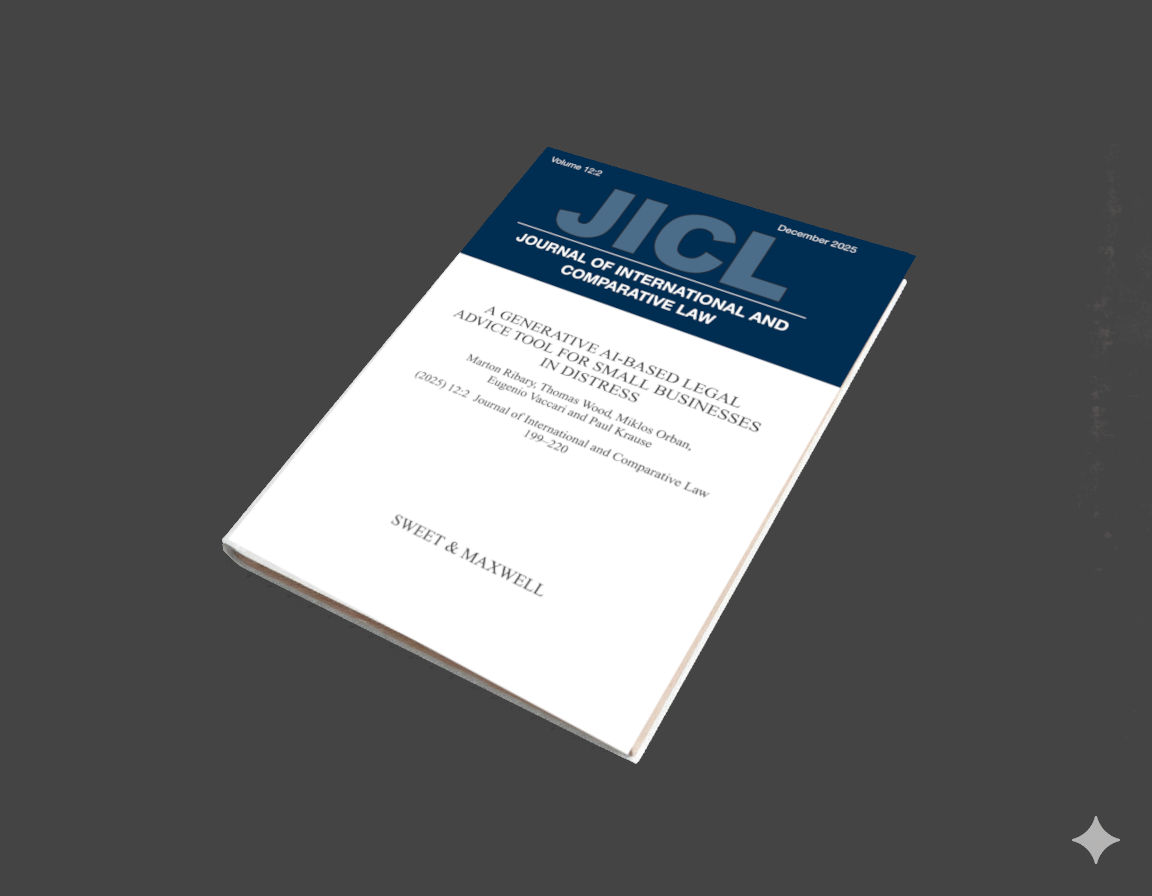
This was an event with a strong theme around legal AI.
Dr Eugenio Vaccari of Royal Holloway University and Thomas Wood of Fast Data Science presented “A Generative AI-Based Legal Advice Tool for Small Businesses in Distress” at the 4th Annual Conference on the Intersection of Corporate Law and Technology at Nottingham Trent University
Talk abstract:
We developed and tested the performance of a retrieval augmented generation (RAG) system for answering legal queries related to corporate insolvency in England and Wales. The Insolvency Bot relies on open-source legal information and HMRC forms to provide sound responses to a user’s query focusing on insolvency matters regulated by English law. According to a tailor-made mark scheme, we show that our Insolvency Bot consistently outperforms LLMs queried without our RAG setup, and we show that newer versions of LLMs consistently outperform older ones when queried with the Insolvency Bot’s RAG enhancements, and its data sources. An additional user experience survey suggested the need for creating two versions of the bot, one for lay people who expect practical and actionable advice and another for professionals with the relevant legal authorities. Our legal chatbot demonstrates potential to ensure “access to justice” to affected business owners by combining a generative AI system with a trusted knowledge base. The system could be expanded to cover cross-jurisdictional and insolvency-related queries and could be further improved in its technical architecture.
| Time | Speaker | Topic |
|---|---|---|
| 10:45-11:15 | Keynote speaker Dr Akshaya Kamalnath at Australian National University | Corporations, Technology, and the Law |
| 11:15-11:55 | Dr Eugenio Vaccari, Dr Marton Ribary and Thomas Wood | A Generative AI-Based Legal Advice Tool for Small Businesses in Distress (the Insolvency Bot) |
| 13:00-14:20 | Dr Kayode Akintola, University of Sheffield and Pearl Akintola | Augmenting Corporate Agents’ Intelligence in Corporate Insolvency Proceedings |
| 13:00-14:20 | Dr Neringa Gaubienė, University of Vilnius | Understanding AI Literacy Requirements Under the EU AI Act: A Business Perspective on Compliance, Risk, and Opportunity |
| 13:00-14:20 | Dr Simge Aslan, University of Nottingham | Digital Assets and Automated Transactions in Insolvency |
| 14:20-14:50 | Joint discussion of issues arising and collaborative applications |
Dr Akshaya Kamalnath delivered an interesting keynote about corporate AI, and digital governance. She discussed the implications of self-driving corporations, i.e. corporations where the board is entirely AI driven, and whether that is desirable. She brought up the idea of human in the loop and how it cannot always act as a reliable check on AI behaviour, citing research from military contexts.
We had a number of fascinating queries about the Insolvency Bot. For example,
More information: https://www.ntu.ac.uk/about-us/events/events/2025/6/the-4th-annual-conference-on-the-intersection-of-corporate-law-and-technology
Unleash the potential of your NLP projects with the right talent. Post your job with us and attract candidates who are as passionate about natural language processing.
Hire NLP Experts
How can you predict customer churn using machine learning and AI? In an earlier blog post, I introduced the concept of customer churn. Here, I’d like to dive into customer churn prediction in more detail and show how we can easily and simply use AI to predict customer churn.

A generative AI-based legal advice tool for small businesses in distress We are pleased to announce the publication of our paper A generative AI-based legal advice tool for small businesses in distress, in collaboration with an interdisciplinary team based in the UK and Hungary.

Thomas Wood presents the Clinical Trial Risk Tool before the November meeting of the Clinical AI Interest Group at Alan Turing Institute The Clinical AI Interest group is a community of health professionals from a broad range of backgrounds with an interest in Clinical AI, organised by the Alan Turing Institute.
What we can do for you